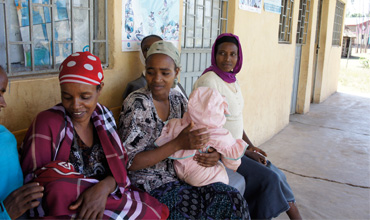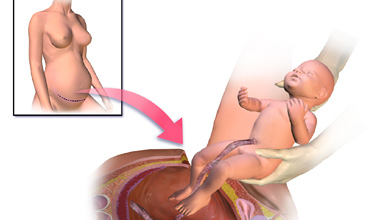References:
[1.] Aiken, L.H., Buchan, J., Sochalski, J., Nicholas, B. & Powell,
M. (2004). Trends in International Nurse
Migration. Health Affairs. 23 (3), 69-77.
[2.] Boucher, A., & Cerna, L. (2014).
Current policy trends in skilled immigration policy. International Migration, 52(3), 21-25.
[3.] Buchan, J., Jobanputra, R., Gough, P., & Hutt, R. (2005). Internationally
recruited nurses in London: Profile and implications for policy. Kings
Fund: London.
[4.] Docquier, F., & Rapoport, H. (2012).
Globalization, brain drain, and development. Journal
of Economic Literature, 681-730.
[5.] Fang, Z.Z. (2007). Potential
of China in global nurse migration. Health Services Research. Retrieved August
29, 2008, from http://findarticles.com/p/ articles/mi_m4149/is_3_42/ai_n27260232/pg_1?tag=artBody;col1
[6.] Gay, L.R. & Diehl, P. L. (1992). Research
methods for business and management. New
York: Macmillan.
[7.] Ghaffar, A. (2007). Job satisfaction among nurses in Pakistan.
Unpublished Masters thesis, submitted to the Aga Khan University, Karachi, Pakistan
[8.] Lindio-McGovern,
L. (2014, July). The International Migration of Nurses and Doctors into Healthcare
Systems: A Look into the Philippine Case. In XVIII
ISA World Congress of Sociology (July 13-19, 2014). Isaconf.
[9.] Lorenzo, M., Galvez-Tan, J., Icamina, K., & Javier, L. (2007). Nurse Migration from a Source Country Perspective: Philippine
Country Case Study. HSR, 42(3):1406-1418.
[10.] Mustafa, M. (2005). Barriers to higher education in Nursing: Sindh,
Pakistan. Unpublished Masters thesis, submitted to the Aga Khan University,
Karachi, Pakistan
[11.] Nasreen, G. (2007). Nursing
- a thankless profession.
Retrieved July 15, 2007, from http://www.jang.com.pk/thenews/jul2007-weekly/you-24-07-2007/index.html
[12.] National Institute of Pakistan Studies
(2014). Pakistan Demographic and Health Survey
2012-13. Retrieved June 16, 2014 from http://www.nips.org.pk/abstract_files/Priliminary%20Report%20Final.pdf
[13.] Pinkster,
F. M. (2014). Neighbourhood effects as indirect effects: Evidence from a Dutch case
study on the significance of neighbourhood for employment trajectories. International Journal of Urban and Regional
Research, 38(6), 2042-2059.
[14.] Pittman, P., Aiken, L.H., & Buchan,
J. (2007). International Migration of Nurses. Health Services Research, 42 (3), pp. 1275-1280.
[15.] Polit, D.F., & Beck, C.T. (2003).
Nursing Research: Principles and Methods.
(7th ed.). London: Lippincott Williams & Wilkins.
[16.] Sunguya,
B. F., Hinthong, W., Jimba, M., & Yasuoka, J. (2014). Interprofessional Education
for Whom?—Challenges and Lessons Learned from Its Implementation in Developed Countries
and Their Application to Developing Countries: A Systematic Review. PloS one, 9(5), e96724.
[17.] Thomas, P. (2006). The international migration of Indian nurses: International
Nursing Review 53, 277–283.
[18.] U.S. Census Bureau, International Database (2014). Retrieved April 16,
2015, from http://www.census.gov/population/international/data/idb/informationGateway.php
[19.] Usher,
K., & Lindsay, D. (2004). The nurse practitioner role in Fiji: results of an
impact study. Contemporary nurse, 16(1-2), 83-91. Retrieved July
11, 2014, from http://www.tandfonline.com/doi/pdf/10.5172/conu.16.1-2.83#.VUMSPdKqqko
[20.] World Health Organization. (2013).
Millennium Development Goals Report. Retrieved
April 16, 2014, from http://www.undp.org/content/dam/pakistan/docs/MDGs/MDG2013
Report/UNDP-Report13.pdf

 Health Care Delivery System in Developed Countries, Developing Countries, and Undeveloped CountriesAuthor: Marrie Davis
Health Care Delivery System in Developed Countries, Developing Countries, and Undeveloped CountriesAuthor: Marrie Davis Public Health Nurses’ Knowledge and Use of Nursing Process for Documentation of Care in Southwest, NigeriaAuthor: Odutayo Patience Omonigho
Public Health Nurses’ Knowledge and Use of Nursing Process for Documentation of Care in Southwest, NigeriaAuthor: Odutayo Patience Omonigho Employment Status and Mental Illness in Federal Psychiatric Hospital, CalabarAuthor: Umoh, Edet Okon
Employment Status and Mental Illness in Federal Psychiatric Hospital, CalabarAuthor: Umoh, Edet Okon Assessment of Practice of Exclusive Breast Feeding Among Postnatal Mothers in NKST Hospital Mkar, Gboko, North Central NigeriaAuthor: Emmanuel O Chukwu
Assessment of Practice of Exclusive Breast Feeding Among Postnatal Mothers in NKST Hospital Mkar, Gboko, North Central NigeriaAuthor: Emmanuel O Chukwu



